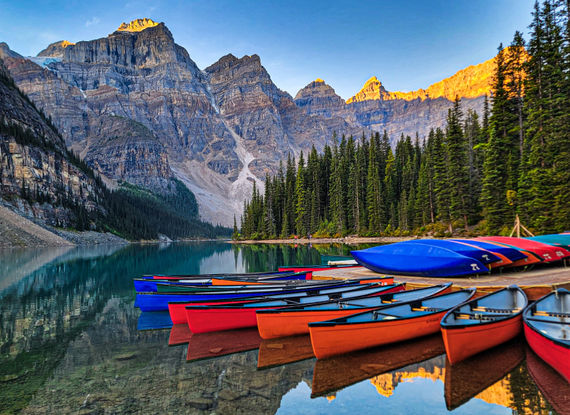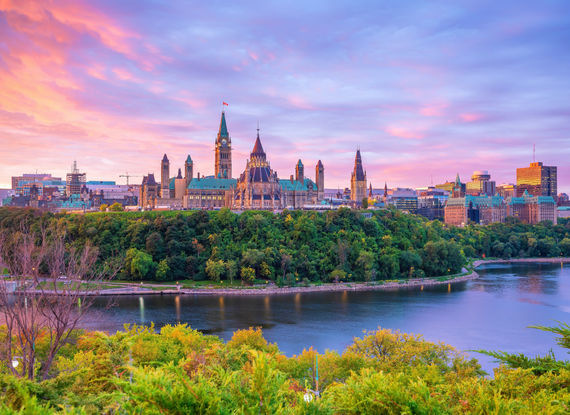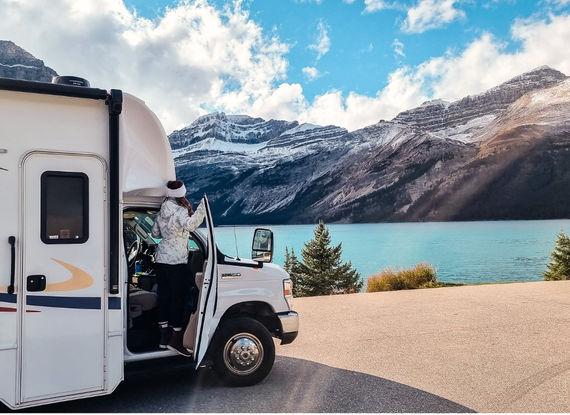If you could see the Earth from space, you would have a perfect view of the boreal forest, a wide green belt circling the top of the northern hemisphere, covering Russia, Sweden, Finland, Alaska and about half of Canada. But there is a lot more than just trees in this forest, as you will discover during your Canadian nature vacation.
There are many things that cannot be seen from space: wetlands that filter millions of litres of water each day; dense layers of moss, peat and soil that store vast amounts of carbon, essential for all living things; and a wide variety of wildlife.
Here are the main species of animals that you are likely to see during your trip to Canada:
THE BEAVER
 - is an superb engineer: builds impressive lodges, canals and dams;
- is an superb engineer: builds impressive lodges, canals and dams;
- can see just as well under water as on land;
- is slow and clumsy on land, but gracious and agile in the water;
- has influenced the history of Canada more than any other animal.
THE WHITE-TAILED DEER
- is the most common and most widely distributed of North America's large mammals;
- the females will sometimes leave her fawn unattended for hours at a time;
- may have difficulty surviving the winter, particularly if there is overpopulation or if snow is deep;
- a male will occasionally gets its antlers hopelessly entangled with those of another male during a mating season battle, resulting in the slow death of both animals.
THE CARIBOU
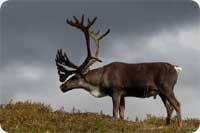 - is the only member of the deer family in which both females and males carry antlers;
- is the only member of the deer family in which both females and males carry antlers;
- has been known to run for kilometres in the summer to escape from hordes of pesky flying insects;
- uses lichens as a primary winter food, which enables it to survive on harsh northern rangeland. Its name probably comes from the Mi'kmaq word "xalibu", which means "the one who paws".
THE MOOSE
 - is a powerful swimmer within days of birth;
- is a powerful swimmer within days of birth;
- can dive more than 5.5 m for plants at the bottom of a lake;
- has very poor eyesight;
- as a calf, gains weight faster than any other big game animal.
- is the largest member of the deer family, weighing up to 800 kg.
THE BLACK BEAR
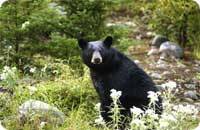 - has flexible lips and a long, agile tongue that help it to gather tiny food items such as blueberries and ants;
- has flexible lips and a long, agile tongue that help it to gather tiny food items such as blueberries and ants;
- has been known to return to a site after it has been captured and moved more than 200 km;
- may wake up from winter hibernation and wander around for short periods;
- is tiny when born, weighing slightly more than 225 g (0.225 kg), compared to its mother’s weight of 70 kg;
- appears heavy and awkward but has been clocked at speeds of up to 55 km/hour.
THE GRIZZLY BEAR
- is a solitary animal whose home range may be as large as 1,800 km² for males;
- is a true wilderness creature that can survive only in relatively undisturbed areas;
- is considered a carnivore, but eats mostly vegetation;
- is very small at birth, weighing about 400 g and measuring less than 22.5 cm.
THE EASTERN GREY SQUIRREL
- can be reddish, grey or black;
- can lose part of its tail to escape a predator’s grasp if necessary;
- can reach speeds of up to 25 km per hour on the ground;
- leaves tracks in the snow that often look like two exclamation marks (!!);
- is found in both urban and rural settings.
THE WOLVERINE
 - generally prefers remote areas, far away from humans and development;
- generally prefers remote areas, far away from humans and development;
- can travel up to 40 km during its daily hunting activities;
- is known by a variety of descriptive names, including glutton (because of its voracious appetite) and skunk bear, because it marks its food and its territory with urine and musk;
- has one of the most striking furs of Canadian mammals;
- despite its small size, is one of the fiercest animals on the planet.
THE WOLF
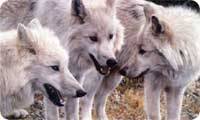 - has a highly organized hierarchical social structure centering on a dominant male and a breeding female;
- has a highly organized hierarchical social structure centering on a dominant male and a breeding female;
- has been exterminated in many parts of North America;
- works hard for its food—a pack kills only about one large mammal for every 10 it chases;
- howls as a form of communication among packs.
THE RACCOON
- conserves energy during winter through inactivity, not hibernation;
- gets its English name from the Algonquian word arakun, meaning "he who scratches with his hand";
- develops its familiar facial mask by about 10 days of age, usually before its eyes are open;
- is one of the few creatures that appear capable of making the adjustment from family pet back to wild animal.
THE BLUE WHALE
 The blue whale (Balaenoptera musculus), also known as the blue rorqual, is a marine mammal belonging to the baleen whales (Mysticeti). It is the largest animal known to have existed on Earth (20 to 34 metres long and weighing 100 to 190 tons). The largest specimen ever observed was 35 metres long and weighed 200 tons (gestating); its tongue weighed 4.3 tons and its heart, 698.5 kg.
The blue whale (Balaenoptera musculus), also known as the blue rorqual, is a marine mammal belonging to the baleen whales (Mysticeti). It is the largest animal known to have existed on Earth (20 to 34 metres long and weighing 100 to 190 tons). The largest specimen ever observed was 35 metres long and weighed 200 tons (gestating); its tongue weighed 4.3 tons and its heart, 698.5 kg.
Long and slender, the blue whale's body can be various shades of bluish-grey dorsally and somewhat lighter underneath. There are at least three distinct subspecies: B. m. musculus of the North Atlantic and North Pacific, B. m. intermedia of the Southern Ocean and B. m. brevicauda (also known as the pygmy blue whale) found in the Indian Ocean and South Pacific Ocean. B. m. indica, found in the Indian Ocean, may be another subspecies. As with other baleen whales, its diet consists almost exclusively of small crustaceans known as krill, and occasionally small fish and squid.
Blue whales were abundant in nearly all the oceans on Earth until the beginning of the twentieth century. For almost 40 years, they were hunted almost to extinction by whalers until protected by the international community in 1966. A 2002 report estimated there were 5,000 to 12,000 blue whales worldwide, in at least five groups. More recent research into the pygmy subspecies suggests this may be an overestimate. Before whaling, the largest population was in the Antarctic, numbering approximately 240,000 (between 202,000 and 311,000). Today very few blue whales swim the world's oceans, and the species is classified as endangered.
You can see blue whales in Tadoussac, in addition to belugas and humpback whales.












